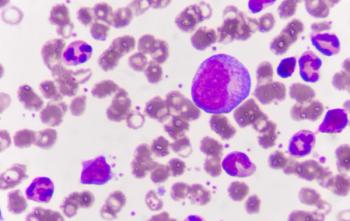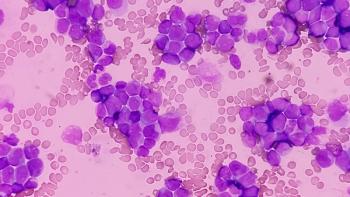
- Rx Road Map: Subcutaneous Daratumumab in Multiple Myeloma
Subcutaneous Daratumumab Requires Less Time, Premed in Multiple Myeloma
Patients receiving subcutaneous daratumumab have less chair time and premedication than those receiving IV formulation, says Heather Wenberg, BSN, RN, OCN.
The subcutaneous formulation of daratumumab with hyaluronidase-fihj (Darzalex Faspro) allows patients with multiple myeloma to spend less time receiving treatment and requires fewer premedications than the intravenous (IV) formulation of daratumumab (Darzalex), according to Heather Wenberg, BSN, RN, OCN.
Wenberg, a regional director of nursing at the American Oncology Network, explained in an interview with Oncology Nursing News that with
She emphasized that patients receiving IV daratumumab usually receive premedication at each cycle and spend more time in the infusion chair. Meanwhile, Wenberg shared that patients receiving subcutaneous daratumumab can be in and out of clinic within an hour or less.
Transcript
As far as decreasing chair time, if patients were getting the IV version [of daratumumab], they would have an IV in their arm, [receiving] premeds all the time, and they would have a 3-hour infusion each time. By having the
Subcutaneous administration is our formulary for American Oncology Network, so that’s our go-to for all of our patients. For patients receiving IV daratumumab, we would educate them on premeds, how the premeds would be each time, and the length of time it takes for that infusion, vs for patients receiving subcutaneous daratumumab, we educate them on the premeds for the first cycle, and then the ease of being able to get in and out with their shot on a weekly basis.
With the first cycle, we like to be very cautious, because we do not want the patient to have anaphylaxis or any other type of issue. They usually get 50 mg of IV Benadryl, 20 mg of IV dexamethasone, and oral [acetaminophen]. We wait about 60 minutes after administration, and then we start the subcutaneous injection.
In the first cycle, we monitor them for about 2 hours after. Once they’re doing fine, we omit that observation. Occasionally if it’s indicated, providers will order a post-injection dose of methylprednisolone (Solu-Medrol), but that’s not the case with all the patients. Most patients do very well with it, and they like the subcutaneous administration of daratumumab.
This transcript has been edited for clarity and conciseness.
Articles in this issue
Newsletter
Knowledge is power. Don’t miss the most recent breakthroughs in cancer care.
















































































